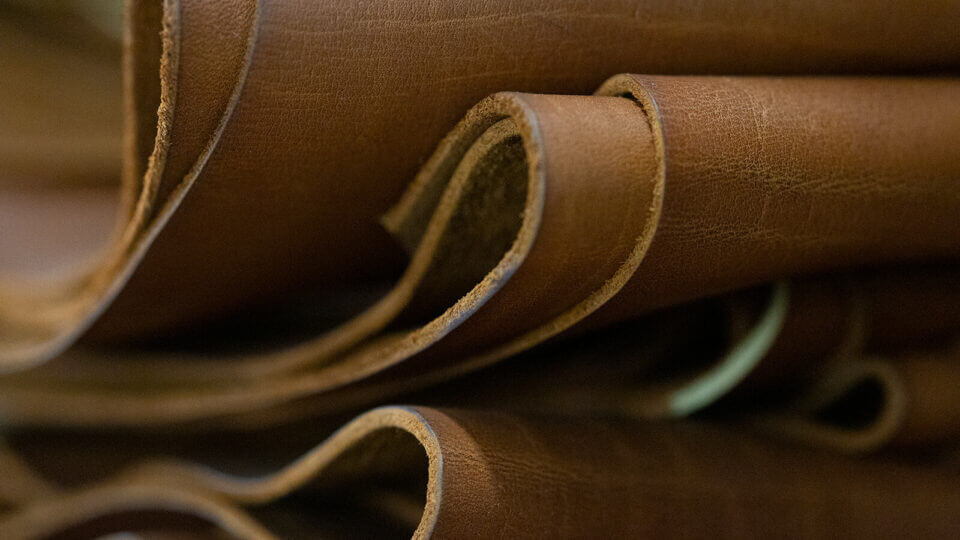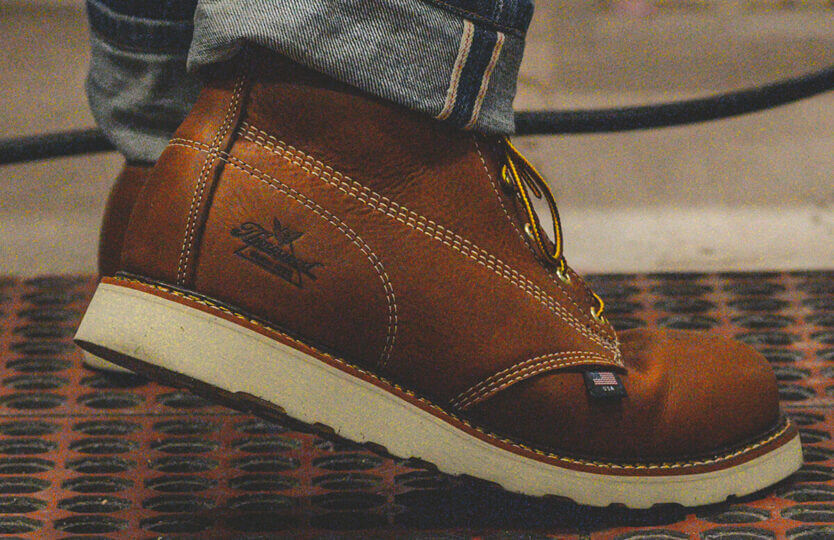When you purchase a leather product, it’s important to know what grades of leather you’re purchasing, especially for something that you depend on for durability, protection, and longevity. Spending a little extra money on a higher quality grade of leather for your work boots can actually save money in the long-term since leather quality affects how long your boots will last.
Do Grades of Leather Matter?
Yes, grades of leather do matter. There are five common grades of leather and although genuine and bonded leather aren’t technically a leather grade, they have become popular terms used by consumers.
- Full-grain leather
- Top-grain leather
- Split-grain leather
- Genuine leather
- Bonded leather
Leather grades are determined by the process the hide undergoes. Splitting the hide is a process that cowhide (aka rawhide) undergoes in order to make it useable for leather goods. The cowhide runs through a machine that has a blade to separate the hide into a top cut and bottom cut at various thicknesses.
The top cut is the most valuable part of the cowhide since it includes the full grain of the hide and the highest leather quality. The bottom cut is referred to as the split and is weaker and thinner since it has no grain.
What Does Full-Grain Leather Mean?
Full-grain leather has the complete grain of the hide intact and is the most durable and resistant to wear. Full-grain leather doesn’t tear and is used for products that might generally be exposed to a lot of wear. Thorogood work boots are made with full-grain leather to ensure that your work boots can protect your feet and keep you comfortable during long days.

Full-Grain vs. Top-Grain Leather
The difference between full-grain leather vs. top-grain leather is that they are processed slightly differently. Full-grain will undergo the least amount of processing while top-grain leather will be buffed, sanded, and then pigmented.
Top-grain leather won’t show natural blemishes or scarring, and the surface will be smoother and more uniform than full-grain leather once it is processed. The pigmentation process also helps top-grain leather with water resistance, preventing moisture absorption, while full-grain leather will need a waterproof additive to prevent it from absorbing moisture into its porous surface.
When it comes to durability, full-grain leather will age and wear better over time. This is due to full-grain forming a patina, which is a barrier of natural oils that absorb over time to create a sheen on the finish of the leather. This is another reason why Thorogood work boots are constructed with excellent leather quality since the oils that full-grain leather absorbs will help heal blemishes and scratches. Top grain leather won’t age well and will begin to look old quickly, since its surface becomes impermeable during the pigmentation process.
What is Split-Grain Leather?
Split-grain leather is made from the bottom split of the cowhide and doesn’t contain any natural markings or grains. It is most commonly used as suede and for goods where soft, pliable leather is preferred. Although it is real leather, this type of leather isn’t a great option for work boots or shoes.
Full-Grain Leather vs Genuine Leather
There is really no comparison between full-grain leather vs. genuine leather. Genuine leather is made from the bottom cut, meaning it doesn’t have any grain and is heavily processed. Full-grain leather is by far superior and the best grade of leather to search for when looking for a product that will be used frequently and heavily.
Is Genuine Leather Real Leather?
Although genuine leather is real leather, it is not technically considered a leather grade. It is actually a marketing term used to create the perception that genuine = high-quality. In fact, genuine leather is the one of the lowest leather quality grades and is often misinterpreted as a sign of a quality product.
What is Bonded Leather?
At the bottom of leather grades is bonded leather, which isn’t technically a leather at all. A heavily processed product, bonded leather is made of leather dust, vinyl, leather scraps, and glue that is bonded together through a complex process to create a cheap product. Bonded leather is at the bottom of the totem pole, and is typically used for cheap clothing, handbags, or upholstered products.
Cow Leather vs. Other Leathers
Cowhide isn’t the only animal skin used to create leather products. Other commonly used leathers include pigskin and goatskin. Pigskin is pliable, water-resistant, and comfortable while goatskin is softer and tougher than cow leather. Some Thorogood work boots use pigskin on the collar of the boot; since pigskin is breathable and supple, it is more comfortable for boot wearers.
How Do Work Boots Gain Their Color?
Leather gains through being dyed after the tanning process. Hides are soaked with dye in barrels and then tumbled so the dye can be absorbed evenly through the hide. The leather is then rinsed and dried before it’s ready for use. Since different grains of leather absorb color differently, some lesser quality grades of leather are sprayed with color and these products don’t recover well once the leather wears and colors become chipped. The majority of Thorogood boots are constructed using leather hides sourced and supplied from the USA and are dyed using the barrel method. Once it has been prepared the boot is then produced with stitching made of bonded nylon, ensuring a strong and durable finished product.
A pair of quality full-grain leather work boots can last years, and if you’re looking for a reliable product that won’t let you down on the job, paying a bit extra for leather quality and workmanship can help ensure that your feet are well-looked after.

